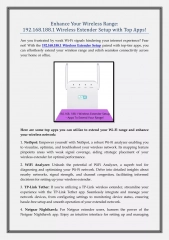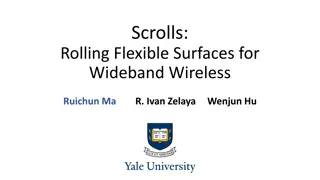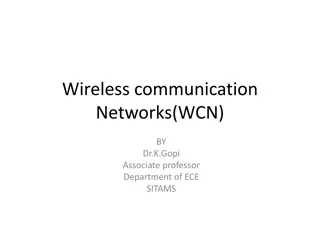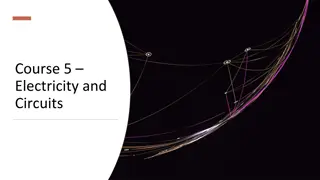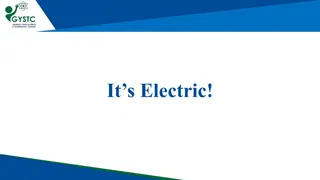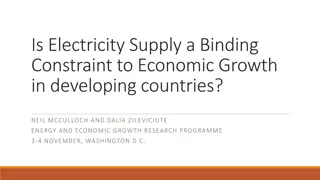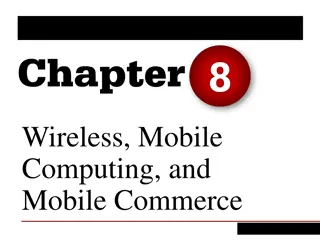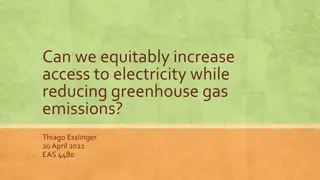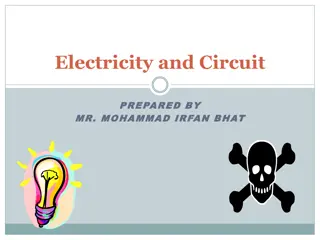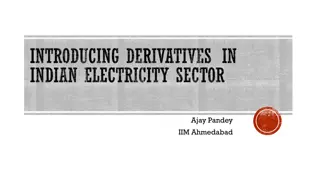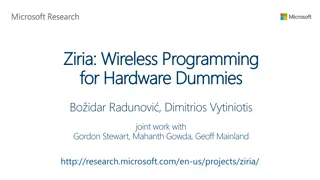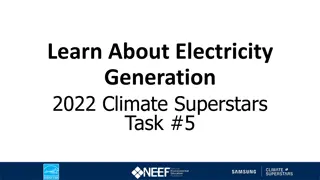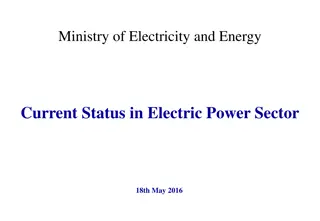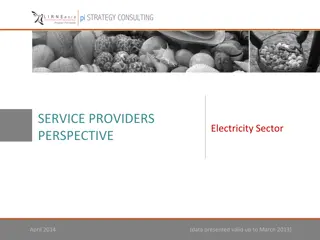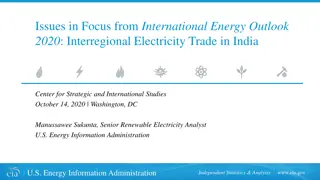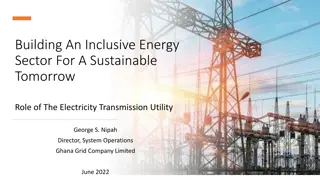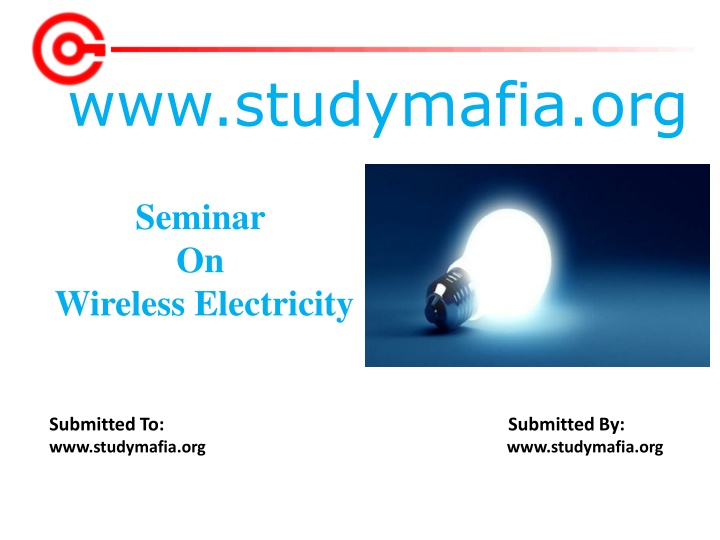
Exploring Wireless Electricity: History, Theory, and Applications
"Delve into the world of wireless electricity transmission with this comprehensive seminar on Witricity. Learn about the physics behind wireless energy transfer, the evolution of technology from Tesla Coils to modern applications, and the advantages and disadvantages of this innovative technology. Discover the potential of wireless electricity for powering electronic devices and its impact on future energy solutions."
Download Presentation

Please find below an Image/Link to download the presentation.
The content on the website is provided AS IS for your information and personal use only. It may not be sold, licensed, or shared on other websites without obtaining consent from the author. If you encounter any issues during the download, it is possible that the publisher has removed the file from their server.
You are allowed to download the files provided on this website for personal or commercial use, subject to the condition that they are used lawfully. All files are the property of their respective owners.
The content on the website is provided AS IS for your information and personal use only. It may not be sold, licensed, or shared on other websites without obtaining consent from the author.
E N D
Presentation Transcript
www.studymafia.org Seminar On Wireless Electricity Submitted To: www.studymafia.org www.studymafia.org Submitted By:
CONTENT What is Wireless Electricity ? History Block diagram Physics behind Wireless electricity Witricity Advantages Disadvantages Conclusion Reference
What is Wireless Electricity Transmission of electrical energy from power source to an electrical load without using wires. Different from cellular transmission of signals
Cell transmission of signals - radio waves Wireless mode of transmission - oscillating magnetic pulses.
Water Current Analogy Pumping of water through a host The flow of water- current Pressure Voltage Nozzle Capacitive terminals
Tesla Coil Similary, when current is passed through a small primary coil to a larger secondary coil As a result, the voltage steps up tremendously. This makes the Tesla Coil a Transformer.
Tesla Coil The transmission distance was increased by using a receiving LC circuit ,tuned to resonance with the transmitter's LC circuit. Using voltages of the order of 20 megavolts generated by an enormous coil, He was able to light three incandescent lamps by resonant inductive coupling Distance -100 feet (30 m).
Wardenclyffe Tower Tesla began construction of a large high-voltage coil facility, the Wardenclyffe Tower A prototype transmitter for a "World Wireless System" To transmit power worldwide. The facility was never completed, due to lack of funding
Wireless Electricity Now-a-days there is a rapid increase of electronic goods like cell phones ,laptops ,I-pods etc., which rely on the chemical storage of energy by the battery which need to be recharged frequently As these are becoming daily needs to the present generation wireless energy transfer i.e, witricity would be useful for many applications as these things need mid range energy.
How it Works Wireless Electricity uses the principle which involves the usage of inductively coupled objects with same resonant frequency. The principle Electromagnetic Induction states that a coil generating magnetic field induces a current in another coil as it is being placed in the field of the former coil. On the usage of resonance, the energy is well transferred between coils having same resonant frequency without any interruption.
There are two copper coils arranged. One at the sender end and the other at the receiver end. 1. Power Supply 2. Transmitting Coil 3. Magnetic field 4. Receiving Coil 5. Status of Battery
Primary Coil When the power is switched on the first coil converts the electricity into magnetic field, which is oscillating at a particular frequency.
Secondary Coil The second coil at the receiving end converts the oscillating magnetic field into electricity. The surrounding environment remains unaffected.
PHYSICS BEHIND WIRELESS TECHNOLOGY Resonance: Resonance involves energy oscillating between two modes. The resonant factor for this resonator: 1 ? = ??
PHYSICS BEHIND WIRELESS TECHNOLOGY Two objects having similar resonance tend to exchange energy without causing any effects on the surrounding objects.
Sequence of flow of Power Step 1 A circuit [A] attached to the wall socket converts the DC current to 2 megahertz and feeds it to the transmitting coil [B]. The oscillating current inside the transmitting coil causes the coil to emit a 2 -megahertz magnetic field
Continued Step 2 The receiving coil [C] is designed to resonate at the same frequency Magnetic induction takes place. Receiving coil picks up the energy of the first coil's magnetic field.
Continued Step 3 The energy of the oscillating magnetic field induces an electrical current in the receiving coil, lighting the bulb [D].
Applications Totally replaces the wires Electronic gadgets like laptops, mobiles, iPod etc. can be charged wirelessly Charging is automatic, without human intervention
Advantages It doesn t require line of sight. It doesn t require batteries and power cables. It doesn t interfere with radio waves. In this, wastage of power is in a small quantity. It is highly efficient when compared with electromagnetic induction. It is affordable.
Limitations Limitations Size Cost Range and Efficiency
Future of Wireless Electricity Future of Wireless Electricity Think of the revolutionary impact of the wireless phone. Now, imagine that same impact on power. The future is one where power can be completely untethered and can be installed anywhere, at a fraction of the cost. This will create a huge disruption to the monopoly held by power distributors. Wireless smart control, or smart off-grid, is going to be what enables this big shift in the power industry. Big Data, advanced analytics, and soon, artificial intelligence (AI), will also have a material impact on performance and
Conclusion Non-radioactive mode of energy transfer. Magnetic fields interact very weakly with biological organisms people and animals and are scientifically regarded to be safe. It can transfer the power through walls and any metal obstacles. Transmission efficiency is maximum over short range of distance (mm). Wireless Electricity technology is based on sharply resonant strong coupling. It is able to transfer power efficiently even when the distances between the power source and capture device are several times the size of the devices themselves
References www.google.com www.wikipedia.com www.studymafia.org

